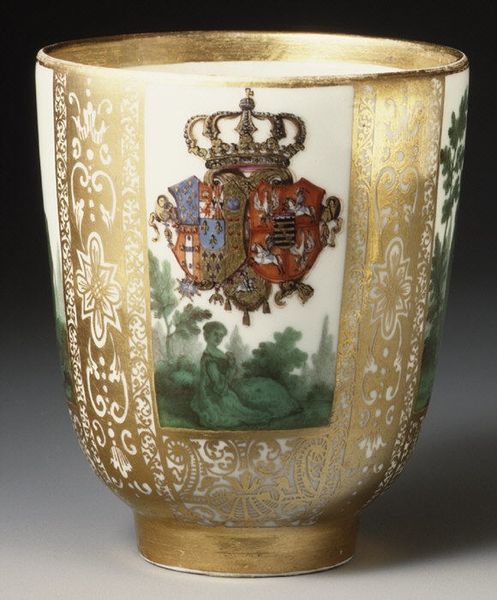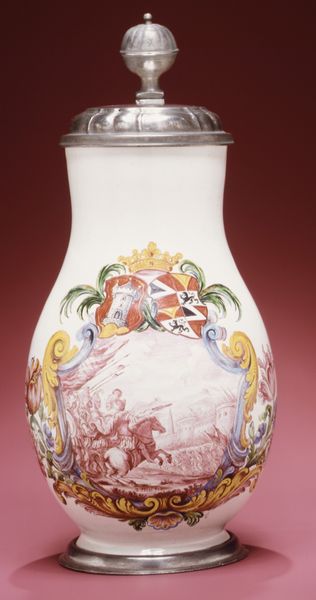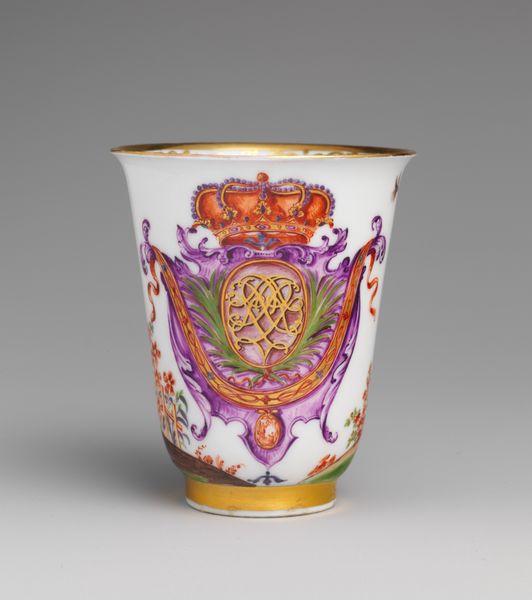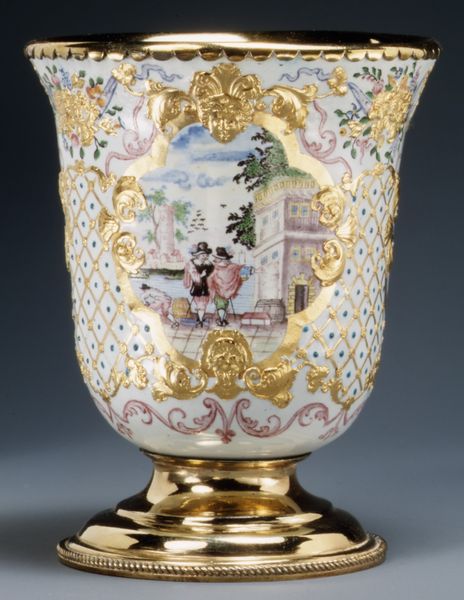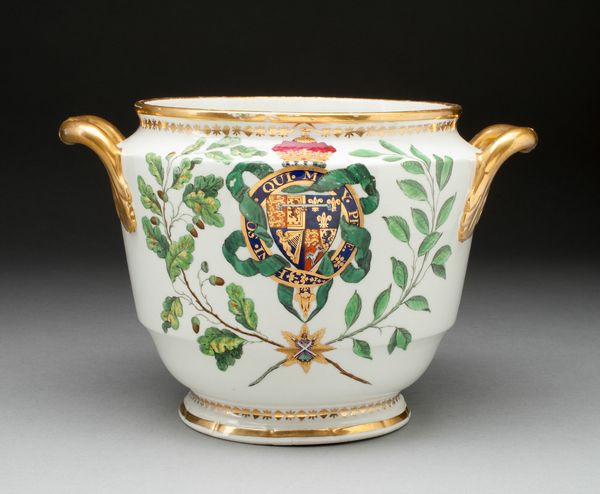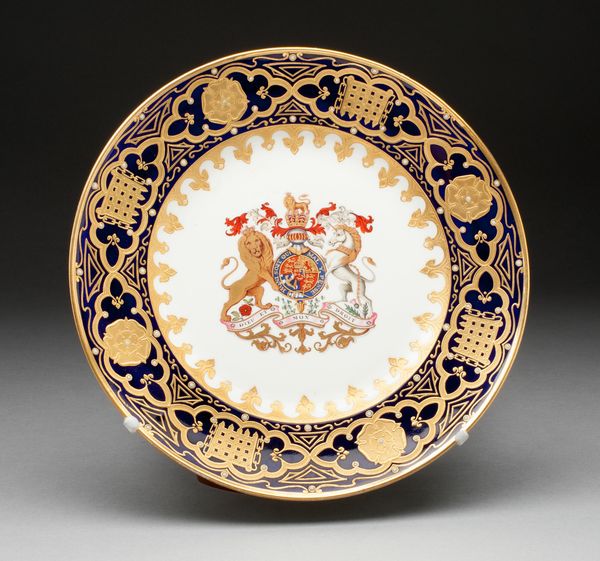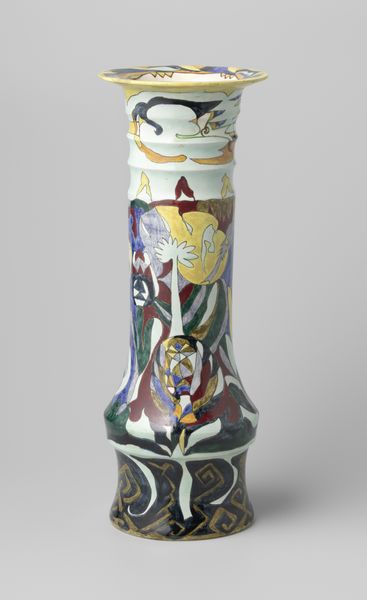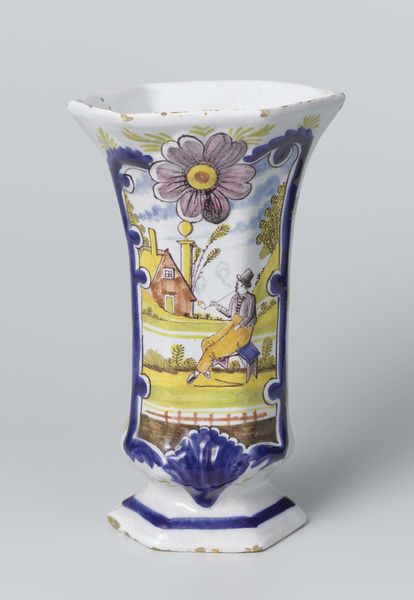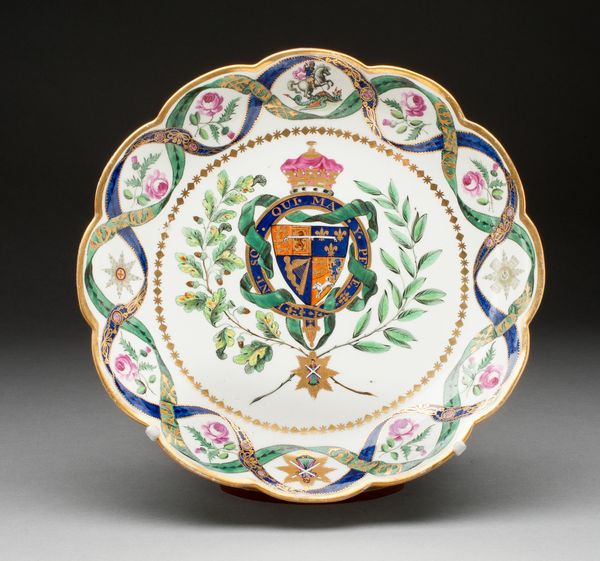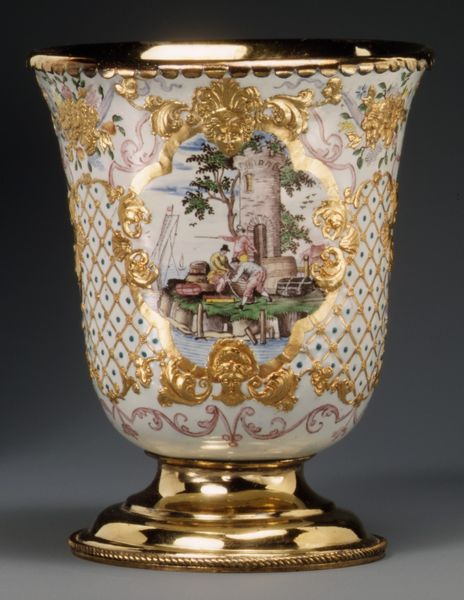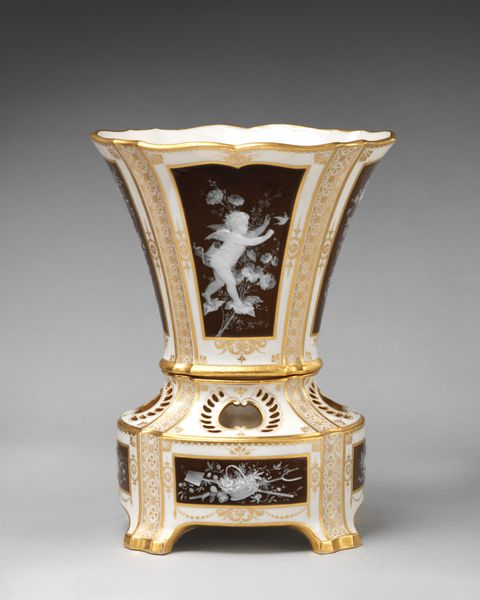
ceramic, porcelain, sculpture
#
baroque
#
pottery
#
ceramic
#
porcelain
#
sculpture
#
ceramic
#
decorative-art
Dimensions: H. 6 1/2 in. (16.5 cm.)
Copyright: Public Domain
Editor: This beautiful porcelain Beaker with cover was crafted by Meissen Manufactory between 1720 and 1735. The fine details and regal emblems are incredibly striking. What can you tell me about the significance of displaying heraldry on functional objects like this? Curator: Well, the Beaker presents a fascinating glimpse into the intersection of art, power, and societal aspirations of the time. Porcelain itself was highly valued, almost akin to currency, because of its expense and rarity in the West during the 18th century. The inclusion of a coat of arms elevates this from a mere drinking vessel to a potent display of social status and aristocratic identity. Who do you think this object might have been intended for? Editor: Someone of considerable wealth, certainly! The intricate details of the armorial bearings look expensive. Did these porcelain pieces serve any other purpose beyond a status symbol? Curator: Absolutely. Objects like these helped legitimize noble families during a time when power structures were constantly evolving. By consuming beverages from this beaker, an aristocrat wasn’t simply drinking; they were engaging in a performative act, reinforcing their identity and right to power within the complex social hierarchy. The "ARP ES" ribbon, perhaps referencing August Rex Poloniae Elector Saxoniae - King August of Poland, Elector of Saxony - adds to the display. Do you see any contradictions in this kind of artwork? Editor: Hmm, I see a display of wealth, but I suppose there could be tension in how accessible that message was. Most people wouldn't be interacting with, or even seeing, objects like this. Curator: Precisely. While overtly declaring status to those within the social circles who would understand the symbolism, such displays can also implicitly highlight the vast disparities in wealth and power, potentially sowing the seeds of discontent. Reflecting on the relationship between the object, its owner, and the wider society of the 18th century enriches our understanding. Editor: That's fascinating. I’ll never look at decorative art the same way again!
Comments
No comments
Be the first to comment and join the conversation on the ultimate creative platform.
